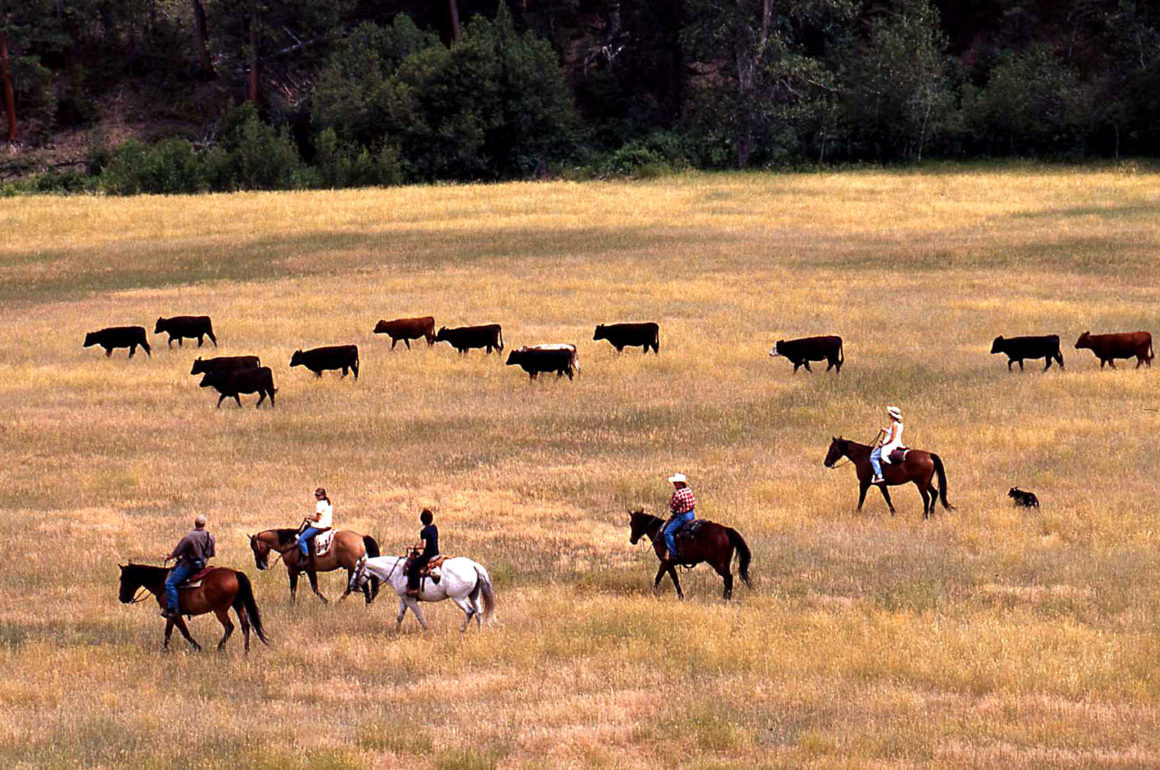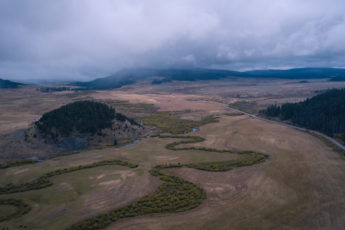
While Ranchers Plates are Full Keeping Us Fed, They Come Together To Protect the Future of our Rangelands.
Over 70 percent of Montana is rangeland — 68 million acres of forests and grassland are suitable for grazing.
Rangeland is a complicated landscape. There are a lot of stakeholders (and steak-holders, as it goes) that take interest in the health, well-being, and management of the land. Most of Montana’s rangeland is privately owned, but what isn’t is public and leased out to ranchers. It makes for some good eatin’ for livestock and wildlife. Some folks want to recreate and hunt on it, some want it preserved for wildlife, and some folks use it to feed us all.
Cattle graze on Montana’s rangeland (left). Cow elk feeding on Montana’s rangeland (right).
With so many different users, it takes a lot of work to keep the land healthy. This doesn’t happen on its own. Just imagine what it would be like if folks weren’t putting in the time and effort to protect and manage our rangelands.
These lands collect and filter water and air. They support our $2.2 billion livestock industry and hundreds of thousands of wild game. The native grasses and plants prevent soil erosion and put nutrients into the ground. They provide us spaces to hunt and fish, and they create the big wild views that make our state so special.
This week in Billings, a group of ranchers, producers, land managers, and range specialists attended the 2018 Montana Range Forum to talk about this natural resource that provides so much for us.
Dr. Lance Vermeire presents on Fort Keogh’s fire and drought research.
“We’re here not just to preach to the choir, but to learn from each other,” said John Hollenback, a rancher out of Gold Creek who chairs the state’s Rangelands Resource Committee.
The two-day event by the Montana Department of Natural Resources and Conservation explored topics like fire, drought, sage grouse, elk, and the latest research out of Fort Keogh and from Fish, Wildlife & Parks.
“We’re all here because we love rangelands and we’re passionate about it,” said Stacey Barta, the DNRC Rangelands Resources program coordinator who helped put on this event.
That passion was as clear as our big skies.
What was also clear, is that there are a lot of different issue facing our range. People from all different perspectives — from government agencies as well as private lands — are concerned about weeds and wildlife, and about changing weather and lack of water. Folks are worried about how they’re going to keep the rangeland intact when family farms are sold or subdivisions divide the landscape.
Cheatgrass, an annual weed found in Montana.
Folks at the forum didn’t always agree with one another, but they’ve developed trust and relationships over years of compromise, tough conversations, and collaboration. They spoke candidly about how hard it is for the next generation of farmers to find land, and about how tough the economy has been on rural communities.
Ranchers and producers recognized that the everyday person walking down the street or the average politician in Helena or D.C. may not know what rangeland is and why it matters. Ranchers and producers have had their plates full as they try to keep our bellies full, and they haven’t had time to reach out and teach people about what it is that they do. For many folks in that room, they are providing a public service for people: They house our wildlife population, they get rid of weeds, they help keep our water and air clean. But they’re often not recognized for these efforts.
After folks shared their concerns and issues, people hit the ground running with solutions and shared ideas for how to solve these problems.
“All the work and great comments that have been done won’t end on this piece of paper,” said Barta.
And that’s great news. Because if these concerns over the health and well-being of our rangeland aren’t addressed, then the Montana we all love — with our clean air, pristine water, open spaces, and strong rural communities — won’t be the same Montana that our kids and grandkids inherit.
-Amanda Garant
Got something to say to Prairie Populist? Send news tips, story ideas and comments to [email protected]. If you have something to submit, or an idea for a story you’d like to write for us, check out our Submission Guidelines here.

